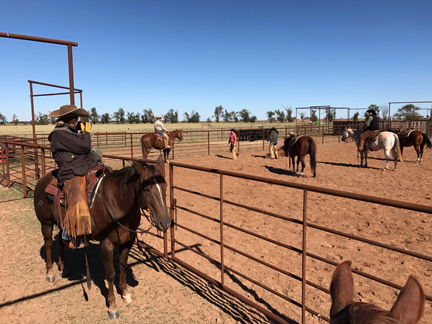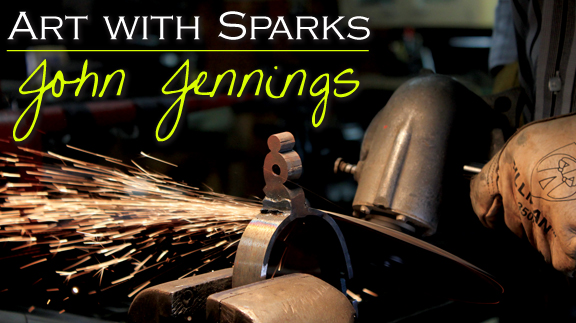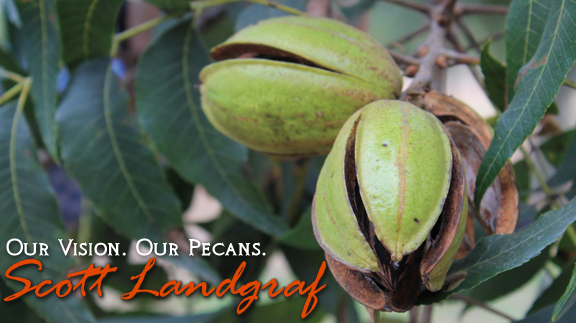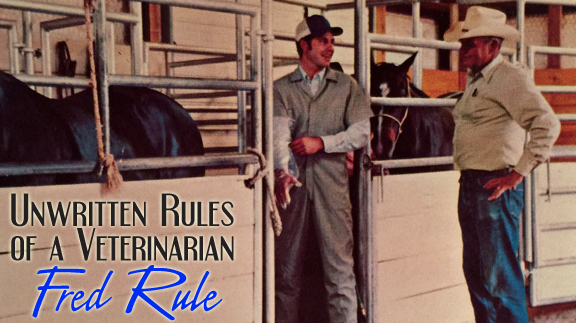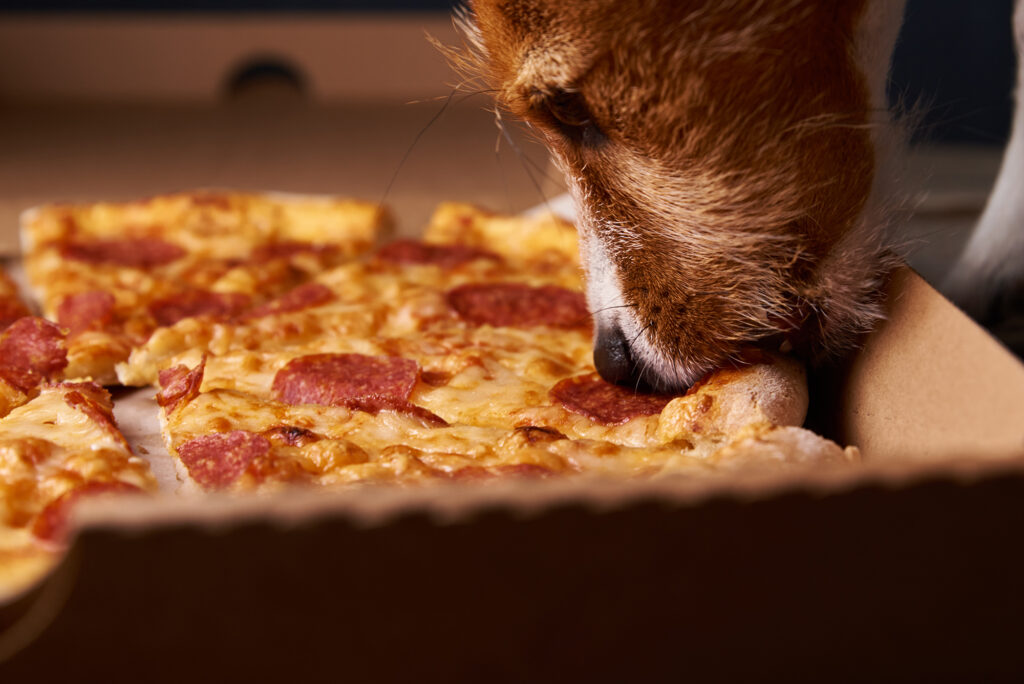Country Lifestyle
February 2018 Profile: Kathryn Leitner

Drawing Inspiration
By Laci Jones
Grasping several colored pencils in her left hand and one bright orange pencil in her right hand, western artist Kathryn Leitner peered over her glasses at her latest work of art. Periodically glancing at the image of a horse displayed on the computer screen, the artist gracefully added another layer of color to the vibrant drawing in front of her.
Self-described as “realism,” Leitner’s art captures the western heritage by telling a story. However, her story began in eastern Montana on her grandparent’s ranch. The oldest of five children, Leitner stated her “rural roots” come from traditional ranching.
“We had chickens and a milk cow,” she added. “We had beef cattle and a little bit of hay. It was very traditional.”
All her siblings are artistic in some fashion, and Leitner is no exception. Leitner was first exposed to drawing at an early age. She recalled picking up pencil and sketchbook during her first-grade year, and her parents giving her “how to draw” books.
Two years later, the family moved from her grandparent’s ranch north of Winnett, Mont., to Lewistown, Mont. They later relocated to California during her freshman year of high school. While adjusting to the urban lifestyle was difficult for Leitner, experiencing a different culture had an impact on the young student.
“It was a culture shock, but I think you gain things from everywhere you are,” she explained. “We learned to be a lot more self-sufficient, strong and confident. You either decide you like it or you decide that you really appreciate where you came from, so it definitely made me appreciate my roots.”
Her family was supportive of her art, but the first teacher who encouraged her was her fifth-grade art teacher. Leitner developed her skill in high school art classes, describing the experience as “instrumental.” She learned different techniques, experimenting with mostly graphite. However, she also took a painting class using acrylic.
Leitner’s talents were not only with a pencil and paper; she also graduated from beauty school. In 1989, she moved with her grandmother, who relocated to western Oklahoma. The Montana native started working in a salon, and her son Justin was born in 1990. She met and married Jack Leitner three years later.
She opened her own salon at their home in 1994 west of Kingfisher, Okla. With the support of her family and the success of the beauty shop, Leitner was able to further her art. When she started her art, she initially struggled with the thought that it was a “selfish pursuit.”
“I thought you had to be famous to sell your art for a lot of money, and you really aren’t supposed to want fame,” Leitner explained. “I struggled with that, but I read a Max Lucado book called the ‘Cure for the Common Life: Living in your Sweet Spot.’ It talks about how God packs your gifts and he packs your bag and that’s what you’re supposed to use. They are your gifts; you’re not supposed to hide them.”
That book had an impact on Leitner, and she said things began to fall into place when she decided how to use her gift. She found her passion in drawing and painting the western heritage. She observed many ranchers in their everyday activities to help tell a story through her art.
“I really respect that lifestyle,” Leitner said. “It’s not easy ever, but it’s so rewarding. The chance to go out and ride with them, talk with them, spend the day with them, that’s how you’re able to tell their story.”
She works primarily from the photographs taken at different ranches including Tongue River Ranch. Leitner makes at least four trips each year to different ranches to take several thousand photos. The artist develops a relationship with all the cowboys who work on the ranches and their families.
“I always appreciate the opportunity to get material for my art,” she added. “It’s way more than that because you get to know those people, and you don’t always know how you’re going to be blessed by your gift. I can’t count the ways.”
The “beautiful opportunities” to use her gift are rewarding, but it is also a long process. From the time she takes the photos at the ranches to selling the finished art can take up to two years.
After returning from a trip, Leitner analyzes each photo and starts her sketch on vellum from several different photos. The variety of photos from the same moment helps the artist create the story she wants to tell. She has experimented with various mediums throughout her career.
“I mainly concentrated on graphite until my husband bought me a large set of colored pencils,” she chuckled. “I honestly had them nine months before I ever got the nerve to try them because it was intimidating. I always used just graphite—then all of a sudden I had all these colors.”
Leitner also began working with oils, learning from fellow artists.
“I took a class with Bob Faust from Okarche, Okla., who was giving art classes, and I started taking oil painting classes with him for quite a few years,” she explained.
The artist later took classes from Dennis Parker in Oklahoma City.
She also visited the National Cowboy & Western Heritage Museum in Oklahoma City, stating it was “the first exposure I really had to a lot of good art.” She garnered inspiration from these trips, and started participating in workshops with the featured artists including Carrie Ballantyne and Lisa Ann Watkins.
Leitner said she was inspired by watching Ballantyne because her portraits have a “feminine softness.” Watkins works with watercolor pencils, which inspired Leitner to attempt to use the medium. Leitner said watercolor pencils give the underlaying without the “graininess” of a colored pencil.
“I’ve used the watercolor pencils, but I haven’t added water to them,” she began. “I just used them in conjunction with my colored pencils. When you add the water to it, you lose a little bit of the control you have with the pencils being dry, then you have to go back over and add detail.”
Her initial watercolor pencil piece presented Leitner with a few shade challenges where she had to work to “get my lights to come back out.” Despite her initial intimidation, colored pencils are her favorite medium to work with.
“I always go back to the colored pencil because I like the detail,” the artist explained. “They challenge you a little bit more to get your values strong and your colors bright that somehow have a soft, gentle look when you’re finished. I like that.”
While the time dedicated to each piece varies, the artist said she averages 30 to 60 hours. However, Leitner said she was once hesitant to keep track of hours until she participated in a workshop with the president of the Traditional Cowboy Artists, Wilson Capron.
“He said, ‘If you really want this to be a business, you have to treat it like one,’” she recalled. “I really started being more dedicated.”
She logs her hours in a notebook, completing 12 to 18 pieces each year. This has helped her justify the pricing of each piece.
“You would think that seems like a lot of money, but I have 30, 40 or 60 hours invested in a piece,” she explained. “Some have taken two and a half weeks’ worth of work if you’re working a 40-hour week because of all the detail and all the figures.”
The artist said it was once difficult for her to stay motivated with her art. Leitner later realized staying motivated is easier with an organized workspace and structured lifestyle.
“Discipline is really important if you want to take this serious,” she added. “If I can get rid of my distractions, then it’s a part of my blessing that I get to do my art because when I’m doing it, I’m happy.”
To learn more about Kathryn Leitner and her art, pick up the February issue of OKFR!
Country Lifestyle
Riding for the Brand
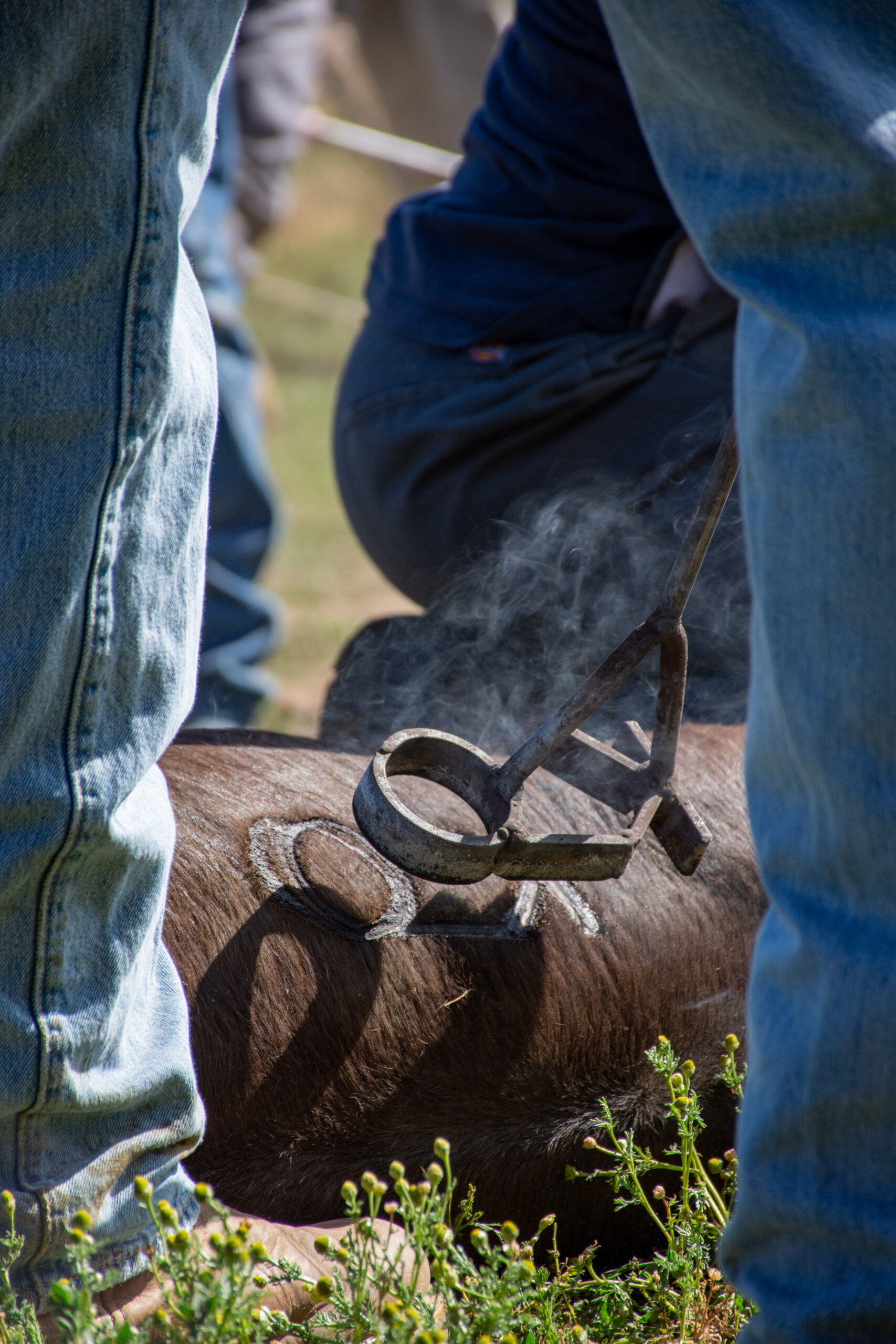
By: Christopher Dysinger
According to the Code of the West a man who has integrity is one who rides for the brand. If you are unfamiliar with cowboy parlance this phrase is used to describe being loyal to the outfit you work for. Cowboys were, “intensely loyal to the outfit they were working for and would fight to the death for it. They would follow their wagon boss through hell and never complain.” -Teddy Blue Abbot. Riding for the brand means being loyal and when I consider what it means to be loyal I am reminded of the words of the Lord Jesus to His disciples in Matthew 16:24, “Then said Jesus unto His disciples, If any man will come after Me, let him deny himself, and take up his cross and follow Me.” To me, to take up the cross and follow the Lord is the epitome of what it means to ride for the brand.
When you place your trust in the Lord Jesus you are signing on to His outfit, to speak the language of the West. When you called upon the name of the Lord Jesus by faith, He saved you and from this point you are riding for His brand. In taking up your cross and following Him you have pledged to be loyal, and this means you face any hardship or trial like a cowboy on the trail moving the herd. Any complaint must be swallowed in the same way you would swallow a cup of coffee. When I hear our faith and loyalty to the Lord Jesus put into these terms it stirs something within me that moves me to keep right on riding for the brand.
Louis L’amour wrote, “Riding for the brand was an expression of loyalty to a man’s employer or the particular outfit he rode for. It was considered a compliment of the highest order in an almost feudal society. If a man didn’t like a ranch or the way they conducted their affairs he was free to quit, and many did; but if he stayed, he gave loyalty and expected it. A man was rarely judged by his past only by his actions. Many a man who came west left things behind him he would rather forget, so it was not the custom to ask questions. Much was forgiven if a man had courage and integrity and if he did his job. If a man gave less than his best, somebody always had to pick up the slack, and he was not admired.” It is the same when a person gives his or her heart to Jesus.
When you come to the Lord Jesus you are not judged by your past. When you come to the Lord Jesus, repenting of sin and seeking forgiveness, everything from your past is left behind. All will be forgiven. 1 John 1:9 reads, “If we confess our sins, He is faithful and just to forgive us our sins, and to cleanse us from all unrighteousness.” When you place your faith in the Lord Jesus you are promising to be loyal and in return you will receive the same. He has promised that He will never leave us or forsake us. When you walk with the Lord Jesus through life you are indeed, “riding for the brand.”
“Riding for the brand” is not just an expression of loyalty nor is it just an expression of pride, it is also an expression of love. When a cowboy claims to be riding for the brand, he is telling any other outfit who may seek his loyalty, that he cannot give it, because he has given his word to another. It is the same when we pledge our faith and loyalty to the Lord Jesus. If any would call us away from Christ we cannot go, because we are riding for the brand.
The End
This article is an excerpt from the book, The Bible and the Code of the West by Dr. Christopher Dysinger.
Country Lifestyle
Farm Dogs & Table Scraps
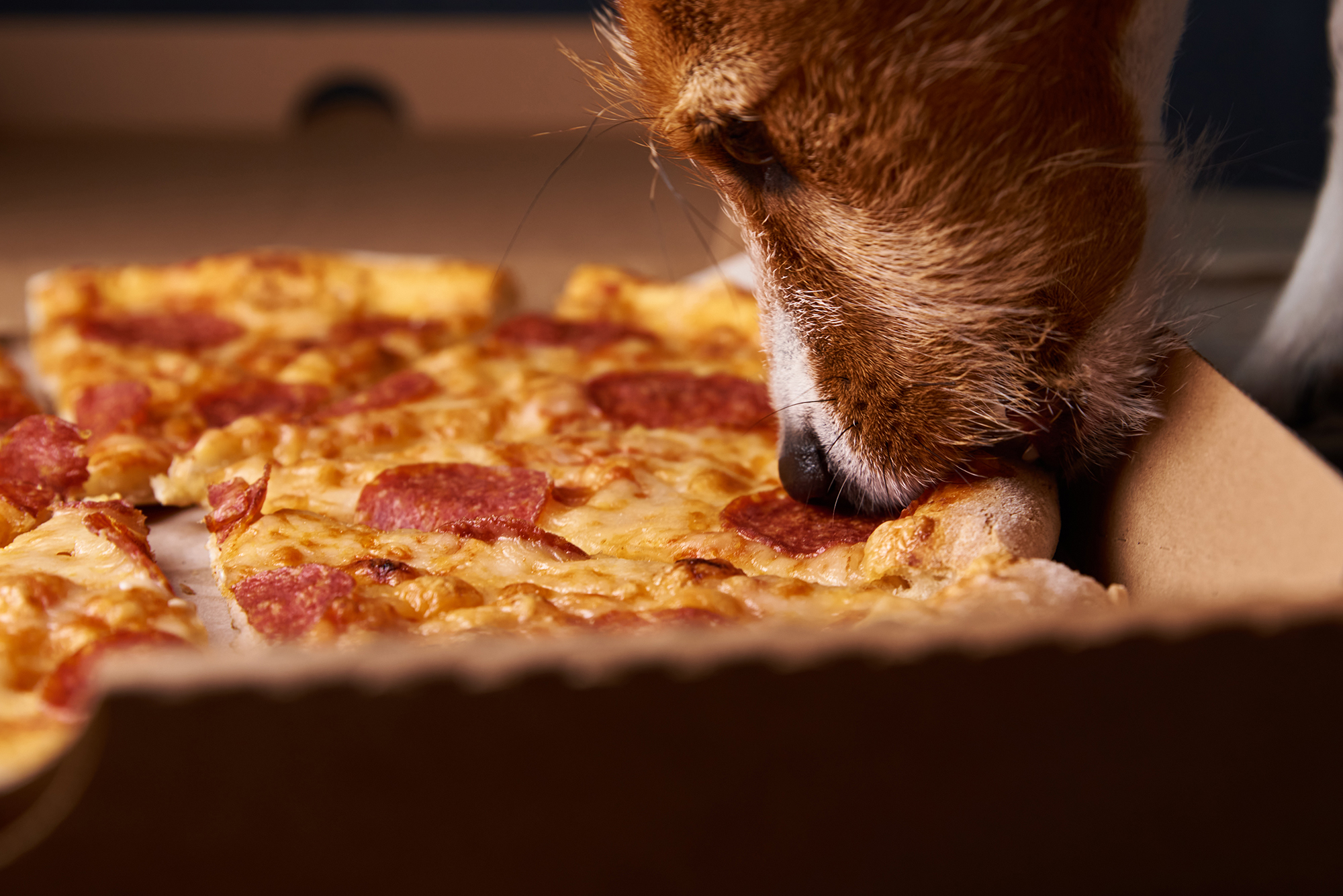
What’s Safe and What’s Not?
Growing up on a farm, our dogs were tough. They roamed the pastures, slept under the barn, and ate just about anything they could get their paws on—whether we meant for them to or not. I’ll admit, I never thought twice when one of our old cow dogs snatched a biscuit off the table or licked up a spill from the barn floor. I’ve even seen a dog steal a whole rib bone off a plate and trot off like he’d won the lottery. And somehow, they always seemed fine.
But here’s the thing—just because they survived doesn’t mean it was safe. For every farm dog that lucked out, there’s another that wasn’t so fortunate. Some human foods can be downright toxic to dogs, and a little bit of bad luck (or a smaller, more sensitive dog) can turn a harmless snack into an emergency.
Common toxic foods lying around the farmhouse
If you’ve got a farm dog—or any dog, really—you need to be aware of the dangers lurking in everyday foods. Some of the biggest culprits include:
Chocolate – The darker it is, the worse it is. Even a little can cause vomiting, seizures, or worse.
Grapes & Raisins – No one’s exactly sure why, but they can cause kidney failure fast.
Onions & Garlic – In large enough amounts, these can destroy red blood cells, leading to anemia.
Xylitol (Found in Sugar-Free Gum & Candy) – This artificial sweetener can send a dog’s blood sugar crashing and cause liver failure.
Alcohol – Even small amounts can be deadly to dogs, affecting their nervous system much more than it does ours.
Bones from Cooked Meat – While not necessarily toxic, they can splinter and cause serious internal injuries.
Macadamia Nuts – These can lead to weakness, vomiting, and even paralysis in dogs.
What to do if your dog eats something toxic
First, don’t panic—but don’t ignore it either. If you know your dog ate something dangerous, call your vet immediately. They can tell you whether to induce vomiting or if it’s something that requires urgent care. If it’s after hours, contact the ASPCA Animal Poison Control Center (888-426-4435) or the Pet Poison Helpline (855-764-7661).
Prevention is always the best medicine, so keep toxic foods out of reach. That might mean keeping the trash can secured, making sure kids don’t slip the dog a treat under the table, or just being more mindful of what’s left on the counter.
Our farm dogs might have been lucky, but luck isn’t a great strategy when it comes to their health. A little awareness goes a long way in making sure they stay happy, healthy, and ready for the next day’s work.
For more information
ASPCA Animal Poison Control: www.aspca.org/pet-care/animal-poison-control
Pet Poison Helpline: www.petpoisonhelpline.com
Visit www.akc.org/expert-advice/nutrition/foods-your-dog-should-never-eat
Country Lifestyle
Summer Squash and Corn Chowder

By Lacey Vilhauer
Total time: 40 minutes
Servings: 6-7
Ingredients
- 6 slices bacon, cooked and crumbled and 1 1/2 Tbsp rendered bacon fat reserved
- 1 1/2 lbs yellow squash, chopped (about 3 medium)
- 2/3 cup thinly sliced celery
- 1 cup diced onion
- 1 Tbsp flour
- 2 cloves garlic, minced
- 2 3/4 cup milk (I used 1%)
- 5 cups canned or fresh cut corn (from about 6 ears corn), divided
- 1/2 cup heavy cream
- 1 1/2 tsp chopped fresh thyme (or 1/2 tsp dried)
- 3/4 tsp salt, then more to taste
- 1/4 tsp freshly ground black pepper, then more to taste if desired
- 3/4 cup shredded cheddar cheese, for serving
- Chopped green onion for garnish (optional)
Instructions
Heat 4 tsp reserved bacon fat in a large pot over medium-high heat. Add celery and onion and sauté 2 minutes then add the squash.
Saute until tender, about 6 minutes, adding in garlic and flour during last 2 minutes of sauteing. Reduce heat slightly.
Add 1 1/2 cups milk, 2 cups of the corn, thyme, salt and pepper to the sauteed veggies.
To a blender add remaining 3 cups of corn, remaining 1 1/4 cups milk and the cream. Process in blender until nearly smooth (about 30 seconds).
Add pureed mixture to pot and stir to blend. Cook until mixture reaches a light boil.
Serve warm with shredded cheese, crumbled bacon and sliced green onions if desired.
-

 Attractions8 years ago
Attractions8 years ago48 Hours in Atoka Remembered
-

 Country Lifestyle11 months ago
Country Lifestyle11 months agoJuly 2017 Profile: J.W. Hart
-

 Country Lifestyle9 years ago
Country Lifestyle9 years agoThe House a Treasure Built
-

 Country Lifestyle4 years ago
Country Lifestyle4 years agoThe Two Sides of Colten Jesse
-

 Outdoors7 years ago
Outdoors7 years agoGrazing Oklahoma: Honey Locust
-

 Equine8 years ago
Equine8 years agoUmbilical Hernia
-

 Outdoors5 years ago
Outdoors5 years agoPecan Production Information: Online Resources for Growers
-

 Farm & Ranch7 years ago
Farm & Ranch7 years agoHackberry (Celtis spp.)


